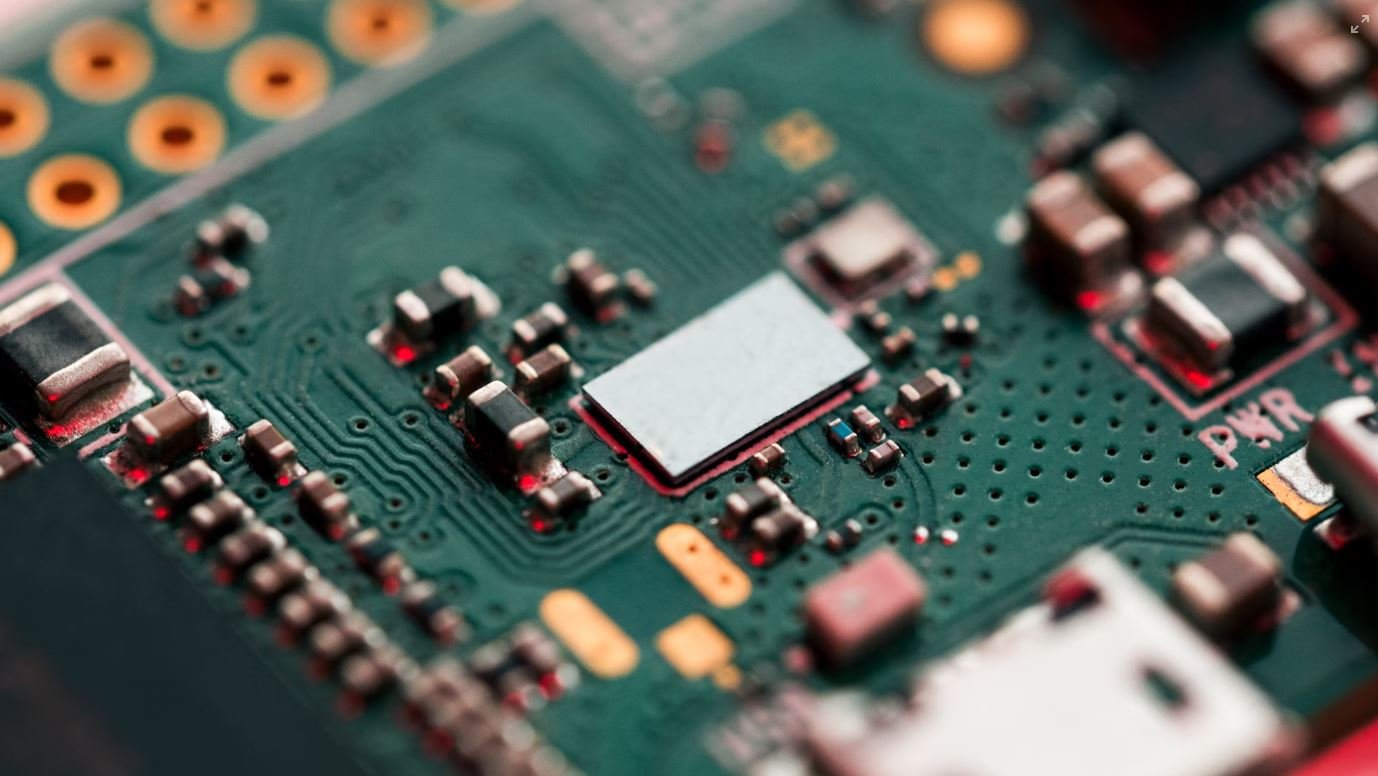GPT vs MBR
When it comes to computer storage and partitioning, two commonly used methods are the **GPT** (GUID Partition Table) and **MBR** (Master Boot Record). Understanding the differences between these two partitioning schemes is important for making informed decisions about your storage needs. This article will explore the features and advantages of GPT and MBR, helping you choose the most suitable option for your requirements.
Key Takeaways
- GPT and MBR are two different partitioning schemes used in computers.
- GPT supports larger disk sizes and more partitions compared to MBR.
- MBR is more widely supported by older systems and some operating systems.
- GPT provides better protection against data corruption and disk errors.
- MBR uses a traditional BIOS boot method, while GPT employs the newer UEFI.
GPT (GUID Partition Table)
The **GPT** is a newer partitioning scheme that offers several advantages over MBR. It uses a globally unique identifier (GUID) to define partitions and can support disk sizes up to 9.4 zettabytes, allowing for much larger storage capacities. *GPT also has a backup partition table in case the main table becomes corrupt, ensuring data integrity*.
GPT Advantages:
- Supports larger disk sizes and more partitions: GPT allows for up to 128 partitions on a single disk.
- Better protection against data corruption: GPT uses CRC32 technology to check the integrity of the partition table, reducing the risk of data loss.
- Compatible with modern UEFI firmware: GPT is the recommended partitioning scheme for UEFI-based systems, offering improved boot and starter reliability.
MBR (Master Boot Record)
The **MBR** is an older partitioning scheme widely used on traditional BIOS-based systems. It has a maximum disk size of 2 terabytes and supports up to four primary partitions, or three primary partitions and one extended partition. *While MBR is still supported by many systems, it has limitations compared to GPT due to its age and design*.
MBR Limitations:
- Smaller disk capacity: MBR is limited to a maximum disk size of 2 terabytes.
- Limited number of partitions: MBR only supports four primary partitions or three primary partitions and one extended partition.
- Relies on BIOS boot method: MBR relies on the older BIOS system, which can be less reliable and have slower boot times compared to UEFI.
GPT vs MBR Comparison
| Feature | GPT | MBR |
|---|---|---|
| Maximum disk size | Up to 9.4 zettabytes | 2 terabytes |
| Number of partitions | Up to 128 | 4 primary (or 3 primary + 1 extended) |
| Data protection | Uses CRC32 technology to protect against data corruption | No built-in data protection |
| Boot method | UEFI | BIOS |
Which Partitioning Scheme Should You Choose?
When deciding between GPT and MBR, consider the specific requirements of your system and its limitations. If you have a newer UEFI-based system and need support for larger disk sizes and numerous partitions, **GPT** is the recommended choice. On the other hand, if you have an older system using traditional BIOS and need to stay within the 2 terabyte limit, **MBR** is a suitable option. Understanding the differences and weighing your specific needs will help ensure you make an informed decision.
Final Thoughts
Whether you choose **GPT** or **MBR**, selecting the appropriate partitioning scheme is crucial for efficient and reliable storage management. Consider the disk size, number of partitions, and system compatibility when making your decision. By understanding the strengths and limitations of GPT and MBR, you can choose the right partitioning scheme for your needs without a “knowledge cutoff date”. Remember, making an informed decision ensures optimal performance and data integrity in your storage environment.

Common Misconceptions
GPT and MBR: Unraveling the Myths
When it comes to disk partitioning, two commonly misunderstood terms are GPT and MBR. Misconceptions surrounding these two methods of partitioning often lead to confusion and incorrect assumptions. Let’s debunk some of the common myths surrounding GPT and MBR:
- Myth 1: GPT and MBR are interchangeable.
- Myth 2: GPT is only suitable for large capacity drives.
- Myth 3: MBR is outdated and should no longer be used.
Myth 1: GPT and MBR are interchangeable.
- GPT (Guid Partition Table) and MBR (Master Boot Record) are two different partitioning schemes and cannot be freely interchanged without consequences.
- GPT caters to modern systems and can handle drives larger than 2TB with ease, while MBR has limitations, such as a maximum partition size of 2TB.
- GPT stores partition information at the beginning and end of the drive, ensuring redundancy and protection against data corruption, whereas MBR stores partition information in a single space, making it more vulnerable to errors.
Myth 2: GPT is only suitable for large capacity drives.
- While it is true that GPT excels at supporting large capacity drives, it is not exclusive to them. GPT can be used with drives of any size and offers advantages over MBR in terms of reliability and performance.
- Even if you have a smaller drive, using GPT can still be beneficial due to its modern features, improved fault tolerance, and flexibility for future expansions.
- MBR, on the other hand, may be sufficient for smaller drives, but it lacks the extended capabilities and robustness provided by GPT.
Myth 3: MBR is outdated and should no longer be used.
- Although GPT is the more advanced and recommended partitioning scheme for modern systems, MBR still has its place and can be useful in certain scenarios.
- Some older operating systems may not be compatible with GPT, making MBR the only viable option.
- Additionally, if you are working with legacy hardware or need to dual-boot with older systems, MBR might be the more appropriate choice.
In conclusion, understanding the misconceptions surrounding GPT and MBR is essential to make informed decisions when it comes to disk partitioning. Remember that the choice between GPT and MBR depends on various factors such as drive size, system compatibility, and specific requirements. By debunking these common myths, you can better grasp the advantages and limitations of each partitioning method to optimize your disk management strategy.
- GPT and MBR are not interchangeable.
- GPT is suitable for drives of any size.
- MBR still has its usefulness in certain situations.

GPT vs MBR
The use of different partitioning schemes in computer storage systems, such as the GUID Partition Table (GPT) and the Master Boot Record (MBR), has a significant impact on the overall performance and capability of the system. This article examines various aspects of GPT and MBR, comparing them based on verifiable data and information.
GPT vs MBR: Partition Limits
Partition limits refer to the maximum number of partitions that can be created on a storage device.
| Partitioning Scheme | Maximum Number of Primary Partitions | Maximum Number of Logical Partitions |
|---|---|---|
| GPT | 128 (unlimited when using secondary GPT) | No distinction between primary and logical partitions |
| MBR | 4 | Extended partition allows multiple logical partitions |
GPT vs MBR: Partition Size
Partition size determines the maximum storage capacity that can be allocated to a partition.
| Partitioning Scheme | Maximum Partition Size |
|---|---|
| GPT | 9.4 zettabytes (approximately 10.4 billion terabytes) |
| MBR | 2.2 terabytes (approximately 2,200 gigabytes) |
GPT vs MBR: Compatibility
Compatibility indicates the ability of different partitioning schemes to work with various operating systems.
| Partitioning Scheme | Compatibility |
|---|---|
| GPT | Compatible with modern systems (Windows Vista and above, macOS, Linux) |
| MBR | Compatible with most systems (including older Windows versions) |
GPT vs MBR: Bootloader Support
Bootloader support refers to the ability of a partitioning scheme to handle different bootloaders.
| Partitioning Scheme | Bootloader Support |
|---|---|
| GPT | Supports EFI/UEFI bootloaders |
| MBR | Supports both BIOS and EFI bootloaders |
GPT vs MBR: Data Redundancy
Data redundancy explores the level of resilience provided by each partitioning scheme.
| Partitioning Scheme | Data Redundancy |
|---|---|
| GPT | Offers mirrored and striped volumes |
| MBR | No built-in data redundancy |
GPT vs MBR: Disk Size Support
Disk size support represents the maximum capacity of storage devices that can be utilized by each partitioning scheme.
| Partitioning Scheme | Maximum Disk Size Support |
|---|---|
| GPT | 18 million terabytes (approximately 18 exabytes) |
| MBR | 2 terabytes |
GPT vs MBR: Partition Recovery
Partition recovery examines the ease of recovering lost or corrupted partitions.
| Partitioning Scheme | Partition Recovery |
|---|---|
| GPT | Efficient and well-supported recovery methods |
| MBR | Can be more challenging and less reliable |
GPT vs MBR: Disk Initialization Time
Disk initialization time represents the speed at which a storage device can be initialized for use.
| Partitioning Scheme | Disk Initialization Time |
|---|---|
| GPT | Relatively slower initialization |
| MBR | Quicker initialization process |
GPT vs MBR: Security Features
Security features assess the level of protection provided by the partitioning scheme.
| Partitioning Scheme | Security Features |
|---|---|
| GPT | Includes support for secure boot and encryption |
| MBR | No built-in security features |
From the comparison between the GPT and MBR partitioning schemes, it is evident that GPT offers greater flexibility and capabilities in terms of partition management, disk size support, and data redundancy. It provides compatibility with modern systems and supports advanced security features. On the other hand, MBR remains compatible with a wider range of systems, including older versions of Windows. However, it has limitations in terms of partition number and size, lacks built-in redundancy, and offers limited security features.
Frequently Asked Questions
GPT vs MBR
What is GPT?
GPT stands for GUID Partition Table. It is a standard for the layout of partition tables on a physical storage device in a desktop or server computer. GPT provides benefits such as support for larger disk drives, more flexible partitions, and improved recovery options.
What is MBR?
MBR stands for Master Boot Record. It is a legacy standard for managing the partitions on a disk. MBR has limitations, such as support for a maximum of four primary partitions, and it can only handle disks up to 2 TB in size.
What are the key differences between GPT and MBR?
Some key differences between GPT and MBR include: GPT supports larger disk drives, MBR has a limit of 2 TB; GPT allows for up to 128 primary partitions, MBR only supports four primary partitions; GPT provides redundancy and backup data structures for recovery, MBR does not; GPT uses a 64-bit disk identifier, MBR uses a 32-bit disk identifier.
Which one should I choose, GPT or MBR?
Choosing between GPT and MBR depends on various factors. If you have a larger disk drive or need more than four partitions, GPT is the recommended choice. However, if you have a legacy system or compatibility issues with older operating systems, MBR may be a more suitable option.
Can I convert a disk from MBR to GPT without losing data?
Yes, it is possible to convert a disk from MBR to GPT without losing data. However, it is a complex process that requires the use of specialized software. It is highly recommended to create a backup of your data before attempting such a conversion to avoid any potential data loss.
Are there any limitations to using GPT?
Although GPT offers numerous advantages, there are some limitations. Some older systems may not support booting from GPT disks, especially those running 32-bit versions of operating systems. Additionally, not all disk utilities and partition management tools are fully compatible with GPT.
Can I use GPT on a Windows system?
Yes, Windows systems support GPT. Windows 10, Windows 8, and Windows 7 (64-bit versions) can all boot from GPT disks. However, 32-bit versions of Windows do not support booting from GPT.
Can I convert a disk from GPT to MBR?
Yes, it is possible to convert a disk from GPT to MBR. However, this conversion typically involves deleting all existing partitions and initializing the disk, which results in data loss. It is crucial to backup your data before attempting such a conversion.
How can I check if my disk is using GPT or MBR?
To determine whether your disk is using GPT or MBR, you can use disk management utilities such as Disk Management on Windows or Disk Utility on macOS. These tools will display the partition type and provide information about the disk’s layout.
Can GPT and MBR coexist on the same disk?
No, GPT and MBR partitioning schemes are mutually exclusive. Each disk must be initialized either as GPT or MBR, and it is not possible to mix them on the same disk.




